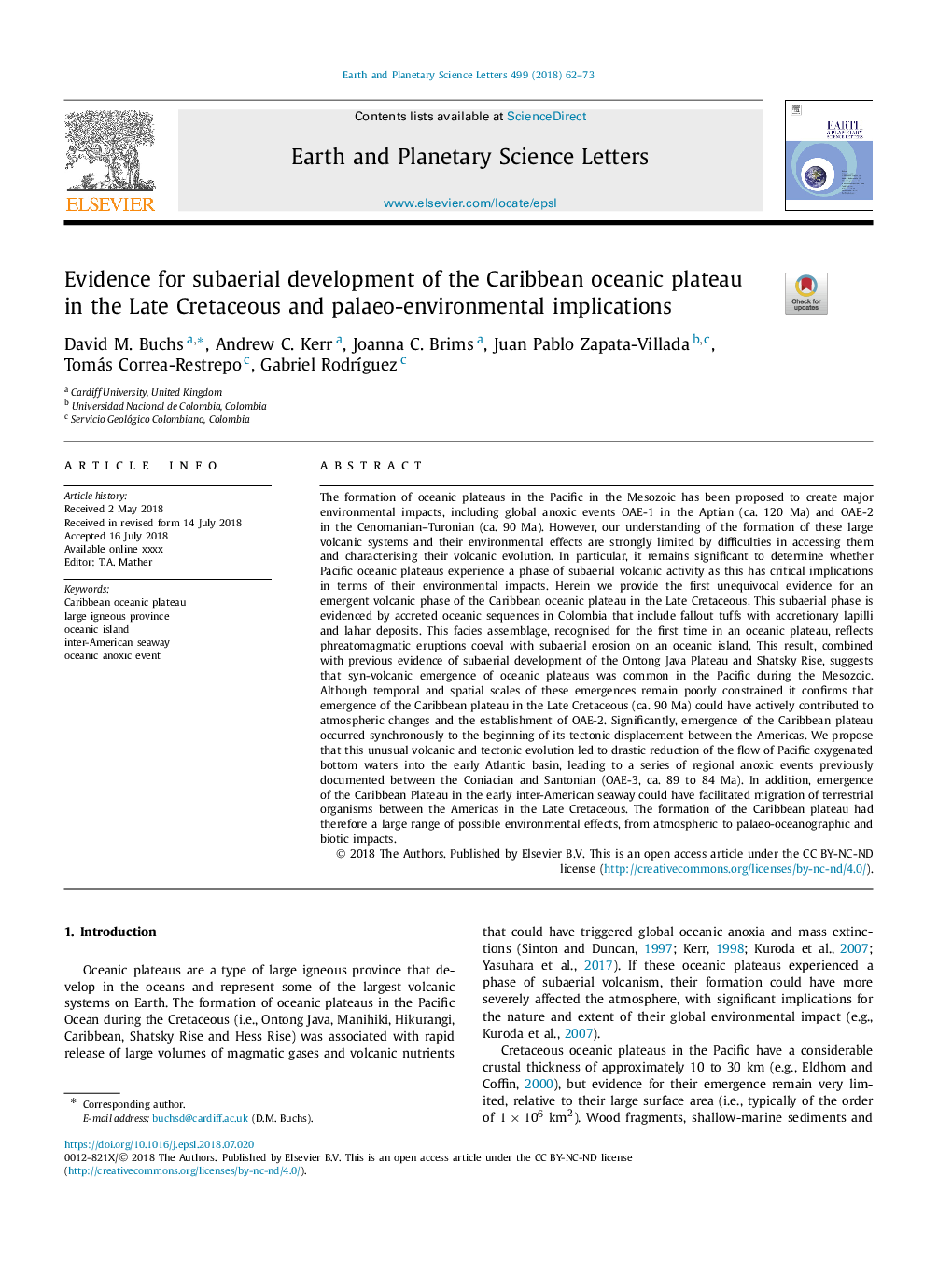| کد مقاله | کد نشریه | سال انتشار | مقاله انگلیسی | نسخه تمام متن |
|---|---|---|---|---|
| 8906679 | 1634657 | 2018 | 12 صفحه PDF | دانلود رایگان |
عنوان انگلیسی مقاله ISI
Evidence for subaerial development of the Caribbean oceanic plateau in the Late Cretaceous and palaeo-environmental implications
ترجمه فارسی عنوان
شواهد برای توسعه زیررویی فلات اقیانوسی کارائیب در پیامدهای زودرس کرتاسه و محیط زیست محیط زیست
دانلود مقاله + سفارش ترجمه
دانلود مقاله ISI انگلیسی
رایگان برای ایرانیان
کلمات کلیدی
فلات اقیانوسی کارائیب، استان آذربایجان غربی، جزیره اقیانوس راه دریا آمریکا، رویداد آنوکسی اقیانوس
موضوعات مرتبط
مهندسی و علوم پایه
علوم زمین و سیارات
علوم زمین و سیاره ای (عمومی)
چکیده انگلیسی
The formation of oceanic plateaus in the Pacific in the Mesozoic has been proposed to create major environmental impacts, including global anoxic events OAE-1 in the Aptian (ca. 120 Ma) and OAE-2 in the Cenomanian-Turonian (ca. 90 Ma). However, our understanding of the formation of these large volcanic systems and their environmental effects are strongly limited by difficulties in accessing them and characterising their volcanic evolution. In particular, it remains significant to determine whether Pacific oceanic plateaus experience a phase of subaerial volcanic activity as this has critical implications in terms of their environmental impacts. Herein we provide the first unequivocal evidence for an emergent volcanic phase of the Caribbean oceanic plateau in the Late Cretaceous. This subaerial phase is evidenced by accreted oceanic sequences in Colombia that include fallout tuffs with accretionary lapilli and lahar deposits. This facies assemblage, recognised for the first time in an oceanic plateau, reflects phreatomagmatic eruptions coeval with subaerial erosion on an oceanic island. This result, combined with previous evidence of subaerial development of the Ontong Java Plateau and Shatsky Rise, suggests that syn-volcanic emergence of oceanic plateaus was common in the Pacific during the Mesozoic. Although temporal and spatial scales of these emergences remain poorly constrained it confirms that emergence of the Caribbean plateau in the Late Cretaceous (ca. 90 Ma) could have actively contributed to atmospheric changes and the establishment of OAE-2. Significantly, emergence of the Caribbean plateau occurred synchronously to the beginning of its tectonic displacement between the Americas. We propose that this unusual volcanic and tectonic evolution led to drastic reduction of the flow of Pacific oxygenated bottom waters into the early Atlantic basin, leading to a series of regional anoxic events previously documented between the Coniacian and Santonian (OAE-3, ca. 89 to 84 Ma). In addition, emergence of the Caribbean Plateau in the early inter-American seaway could have facilitated migration of terrestrial organisms between the Americas in the Late Cretaceous. The formation of the Caribbean plateau had therefore a large range of possible environmental effects, from atmospheric to palaeo-oceanographic and biotic impacts.
ناشر
Database: Elsevier - ScienceDirect (ساینس دایرکت)
Journal: Earth and Planetary Science Letters - Volume 499, 1 October 2018, Pages 62-73
Journal: Earth and Planetary Science Letters - Volume 499, 1 October 2018, Pages 62-73
نویسندگان
David M. Buchs, Andrew C. Kerr, Joanna C. Brims, Juan Pablo Zapata-Villada, Tomás Correa-Restrepo, Gabriel RodrÃguez,
